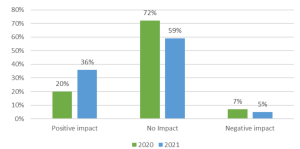
Jobs and Salaries In Prague and Other Major Czech Cities By Industry and Roles In 2022 – Part 1
Is the Czech Republic on your mind to move to and start your new life? Find out about the employment market situation in the country, whether Prague or Brno fits you best, which industries are booming, and what kind of salary you can expect in those sectors, in the first of our series of three articles. Photo credit: freepik
The Czech Republic – An Attractive Destination For Expats With Great Infrastructure and Opportunities
According to the CPL CEE Salary Guide 2022, since the Covid-19 pandemic hit, companies have learned to adapt, operate in a new normal, and take advantage of the opportunities arising from the situation. This is exactly the case in the Central and Eastern European (CEE) region, which continued to bloom. Numerous organisations expanded and still looking for new staff from everywhere, creating a candidate-driven market.
73% of business service centres in the Czech Republic plan to continue expanding their activities in the next two years. The majority deliver services in English and 39% provide services globally, with an international footprint. Moreover, the Czech Republic is also an attractive destination for expats as it can offer great infrastructure such as public transport and accessibility, availability of modern office spaces, and highly liveable cities.
Overall impact of Covid-19 in % for businesses

Source: ABSL Survey, 2021
“The pandemic accelerated the positive transformation of the sector, as Czech centres continue to report an overall positive impact of the pandemic on their operations, with almost no impact on productivity. Some even track increases in effectiveness or new business opportunities,” ABSL Survey 2022.
A Third of Companies In The Business Sector Employ More Foreigners Than Local Staff
The total number of foreigners in the Czech Republic, 2020/2021
| Czech Republic (end of 2021) | 660,849 |
| Prague (end of 2020) | 228,532 |
| Brno Mesto (end of 2020) | 36,880 |
| Ostrava Mesto (end of 2020) | 8,163 |
The largest foreign national groups in the Czech Republic are Ukrainian, Slovak and Russian citizens. Source: Directorate of Foreign Police Service
The qualified foreign workforce is now estimated to total 57,000 people in Czech businesses, and 31% of firms employ more foreigners than local staff, even working from home abroad, and they wish to increase their efforts to continue this trend (Source: ABSL Survey 2022). “Currently, our foreign colleagues contribute 2% of Czech GDP and generate about $4 billion a year,” said Jonathan Appleton, director of the ABSL.
Although Czech cities are catching up with other European cities on the cost of living index, the country still has favourable conditions to attract foreigners. There was a 13% growth in employment in 2021, compared to 5% in 2020. 72% of employees in the business sector work fully from home with optional attendance at the office, and the sector has a diverse workforce with a 44% share of foreign employees (ABSL Survey 2022). It also boasts an educated skilled workforce, an ability to attract and retain employees from abroad, and a stable economic and political environment. Although it’s not the cheapest in CEE, it sets the standard compared to the other countries in terms of working conditions. Companies tend to focus on a strong company culture, providing flexible working hours, and employee engagement and mental health support, all with a view to retaining their employees.
Cost of Living index (current, by city)

New York has the highest index of 100%, as the most expensive city to live in. Prague is at 51 and Brno at 49. Source: Numbeo.com, April 2022
Increases in employment rate and economic activity from 2021 to 2022
| Total Employment rate
15-64y |
General Unemployment rate 15-64y | Economic activity rate 15-64y | |
| January 2021 | 73.5% | 3.3% | 76.0% |
| January 2022 | 75.2% | 2.3% | 76.9% |
Source: Czech Statistics Office, January 2022
The proportion of employed persons in the country (15–64 years) reached 75.2% in January 2022, an increase of 1.6% compared to January 2021. The unemployment rate decreased by 1% year-on-year.
Keep a look out next week for the second article in the Salary Guide Series to get a complete overview, and follow us on social media to get fresh updates from Jobspin.

